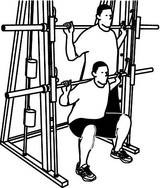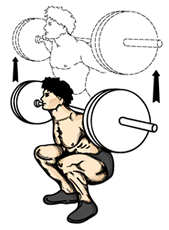If you have been following along with my series on exercises to avoid at the gym you’ll know that I have talked about all leg exercises so far. This week though in the final part of the series, I would like to share an upper body exercise that might not be as effective as you thought.
The exercise is the Biceps Preacher Curl and although it is a good bicep builder and isolation exercise there are a few drawbacks that could lead to injury down the road.
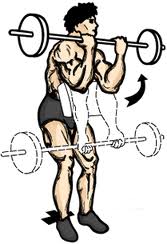 Dr. Kareem Samhouri (a Neuro Metabolic Fitness and Rehab Expert) points out that from a muscle balance perspective, the forward shoulder position of this exercise leads to an increased stretch on the rotator cuff and biceps tendon. The position of this exercise creates an imbalance between your pecs and lats/shoulderblade stabilizers resulting in a forward shoulder position. This leads to rotator cuff tendonitis, biceps tendonitis, and an increased risk of tears.
Dr. Kareem Samhouri (a Neuro Metabolic Fitness and Rehab Expert) points out that from a muscle balance perspective, the forward shoulder position of this exercise leads to an increased stretch on the rotator cuff and biceps tendon. The position of this exercise creates an imbalance between your pecs and lats/shoulderblade stabilizers resulting in a forward shoulder position. This leads to rotator cuff tendonitis, biceps tendonitis, and an increased risk of tears.
This is true for your shoulders and neck. In this forward position, you are at risk for injury. Also, like many people who perform this exercise, you may be placing excessive weight into your armpit, which is where your brachial plexus is. This is the bundle of nerves that controls your arms.
Also, the biceps are being shortened in an over-shortened position for your pecs, reinforcing a common imbalance.
The elbow is only safe when balanced and this is achieved when all the elbow flexors are being worked. The elbow flexors are your biceps, brachialis, and brachioradialis. These muscles flex your elbow and allow you to rotate the palm of your hand up and down.
Second, there is no functional benefit to doing this exercise. This is an artificial movement in an abnormal position. The only purpose to doing the Biceps Preacher Curl is to build the biceps but they only work on elbow flexion. The biceps is also a supinator (meaning it turns your palm up), so by doing the preacher curl you’re missing 50% of the muscles action.
Finally, the metabolic effect of this exercise is low as it is an isolation exercise using only one part of the muscle. You aren’t going to be burning many calories by doing this exercise and if your goal is fat loss then there are far more functional bicep exercises you can do that will get your heart rate up.
So what can you do instead?
A great exercise you can do that will hit all of your elbow flexors is the Curl Up, Hammer Down. The first half of this exercise works your biceps and the last half works your rotators and forearm muscles.
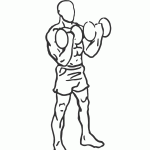 To perform this exercise properly, stand tall with your shoulders back and knees slightly bent. Keep your elbows at your side with your palms facing out. Curl up slowly getting a good squeeze on the biceps and then in the top position, you’ll want to turn your palms towards each other.
To perform this exercise properly, stand tall with your shoulders back and knees slightly bent. Keep your elbows at your side with your palms facing out. Curl up slowly getting a good squeeze on the biceps and then in the top position, you’ll want to turn your palms towards each other.
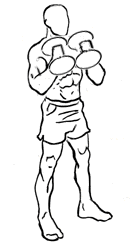 When your hands are in this position it will kind of look like a hammer. Maintain this position as you slowly lower the dumbbells back to the starting position.
When your hands are in this position it will kind of look like a hammer. Maintain this position as you slowly lower the dumbbells back to the starting position.
So there you have it. Another exercise to avoid next time you hit the gym and what you can do instead for a more functional, safe, and effective workout. I hope you have enjoyed this series over the past 5 weeks and I hope that the next time you workout, the more effective exercises I have shown you will bring you one step closer to reaching your fitness goals!




